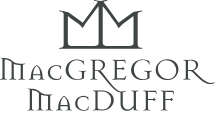At MacGregor and MacDuff we pride ourselves on the quality and craftsmanship of our product. As premium kiltmakers, we have perfected our craft of traditional kiltmaking; with a method and technique that has been passed down and refined through generations of kiltmaking. The quality of our kilts are not only an example of highly skilled kiltmaking, but are in fact the perfect representation of the high standard of cloth that we use.
As we work extremely closely with our mill, we understand the amount of time, effort and hard work that goes into the weaving process of each tartan. From metres of yarn being individually measured onto spools, to the several different stages of quality control checking; our tartan has been handcrafted to the highest of quality. The process of weaving cloth has remained virtually unchanged for decades; each step is of high importance and the main change to the process has been the introduction of modern machines. Although machines are used throughout this process, each step is closely monitored by highly skilled workers who have a keen eye and passion for the craft of weaving cloth.

Today, the process starts with a CAD drawing - this is a computer aided design image which showcases each yarn colour and the sett pattern that the tartan is to follow. These drawings are of high importance throughout the full weaving process, as they are used as a constant reference to what the tartan should look like.
The winding process is the next stage: this is where the yarns required for a tartan are wound onto cones. In order to reduce waste, the exact amount required for the specific tartan is measured. Each stage is highly important, and closely monitored; an error in any stage could seriously hinder the following stages of the weaving process. Then we move on to warping, which is the construction of the pattern of the fabric. The pattern is repeated in sequence across the width of the warp, and knotted at the end. Once completed this is transferred from the warping machine to the loom on a separate beam.

The fabric then finally comes together, through the weaving process. The yarns are interlaced to create the sett pattern. This is an extremely fascinating process to watch, as individual yarns join together to create a tartan. The complete tartan is then passed on to the finishers who inspect the full piece of cloth. Using their hands and keen eye, they examine the cloth for any imperfections. Expertly trained, they are able to fix any problems they may come across; a nick in the cloth, or a loose thread.

At MacGregor and MacDuff, we take pride in using traditional mills who take as much care in the quality of their tartan as we do with our kilts.

